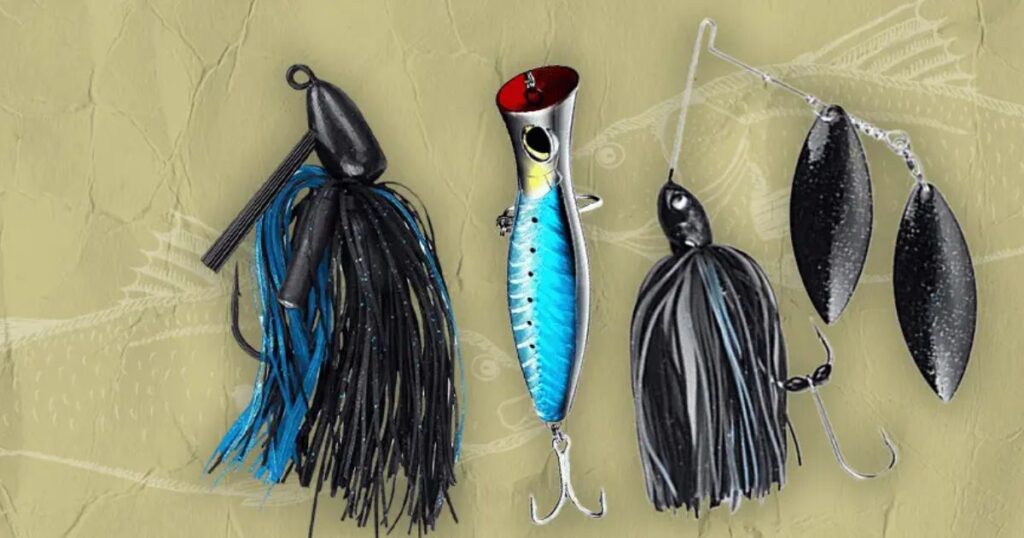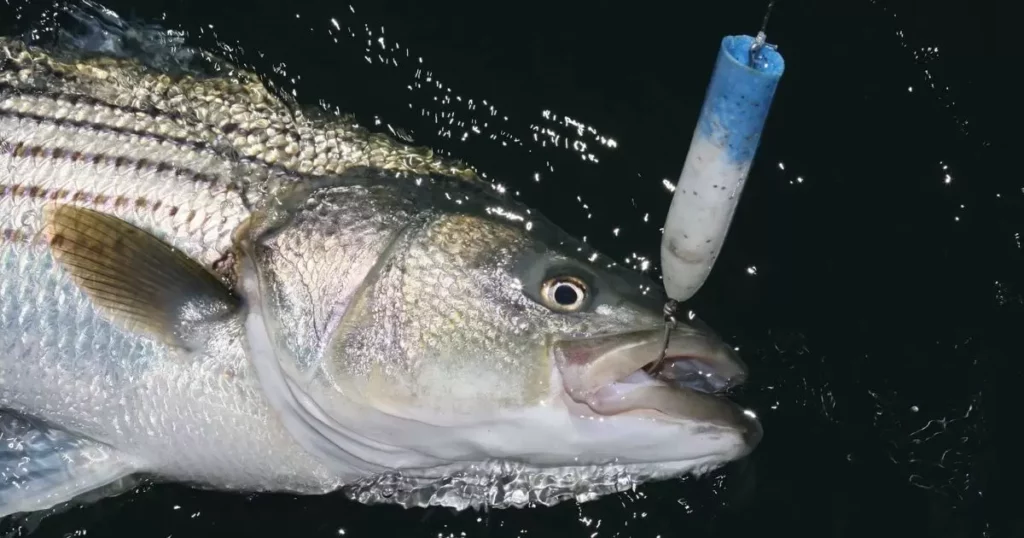Bass fish, known as are freshwater species sought after by many anglers for their exciting sport and delectable taste. These fish are often found in various water bodies and are a popular catch for those looking for a thrilling fishing experience.
Are you ready for an adventure under the moon’s shimmering glow? How to fish for bass at night? This question sparks curiosity and opens the door to an exciting world of nocturnal bass fishing. When the sun sets and darkness prevails, bass behavior changes, offering a unique opportunity for anglers to challenge their skills and increase their chances of a big catch.
Fishing for bass at night is a distinctive experience that demands a specific set of techniques and knowledge. When the stars are out, bass become more active, and knowing the secrets of night fishing can make all the difference. Learning about the best lures, locations, and tactics for night bass fishing will set you on a path to success in the world of angling after dark.
Bass Behavior at Night
At night, bass fish exhibit distinct behaviors that differ from their daytime patterns. They become more active and aggressive, often venturing into shallower waters to feed. In darkness, they rely heavily on their keen sense of hearing and lateral line system to locate prey. This change in behavior creates an excellent opportunity for anglers, as the bass are more likely to strike at lures and baits in their quest for a nighttime meal.
Bass tend to move closer to the water’s surface under the cover of darkness. This behavior can be attributed to the fact that many of their prey species, such as smaller fish and insects, are more active near the surface during the night. Understanding these nocturnal habits of bass is crucial for successful night fishing, allowing anglers to adjust their techniques and bait presentations accordingly.
Best Baits for Night Bass Fishing

When it comes to night bass fishing, selecting the right baits is crucial for enticing these elusive creatures. Dark conditions necessitate lures that make the most of bass’s heightened senses in low light. Soft plastic worms, in colors like black or dark blue, are a top choice for night bass fishing. They have a lifelike texture and movement that can lure bass out of the depths, making them one of the most effective choices.
Another favorite among nighttime anglers is topwater lures. These create commotion on the water’s surface, generating sound and vibrations that attract bass. Topwater lures like buzzbaits and poppers, in dark or natural colors, can be exceptionally productive for those memorable nighttime bass strikes.
Ideal Nighttime Bass Fishing Locations
Ideal nighttime bass fishing locations can vary depending on the region and water body, but there are common factors to consider. Bass often move to shallow areas at night to feed, making places like shallow flats, points, and rocky shorelines excellent choices. Areas near underwater structures such as submerged logs, brush piles, and vegetation can be prime spots to target bass during the dark hours.
When looking for ideal nighttime bass fishing locations, it’s essential to consider water temperature. Bass are more active in warmer waters, so targeting areas where the water temperature is slightly higher can increase your chances of a successful catch. Keep in mind that the availability of underwater prey, like baitfish and insects, can also influence bass locations at night, so it’s helpful to research the specific water body and adapt your strategy accordingly.
Techniques for Hooking Bass at Night

When delving into the world of nighttime bass fishing, understanding how to fish for bass at night is essential. This distinctive approach deviates significantly from daytime angling. To optimize your chances, utilize effective techniques like employing slow-retrieve baits, such as jigs, soft plastics, and slow-rolling spinnerbaits, which mimic prey movement in the dark.
It’s also important to focus on underwater structures, like rocks, fallen trees, or weed beds, where bass tend to hide at night. To enhance your success, employ noisy lures, like topwater plugs or rattling crankbaits, creating vibrations and attracting bass in low-light conditions. Concentrate your efforts in shallow waters, less than 10 feet deep, particularly near shorelines and areas with underwater vegetation.
| Technique | Description |
| Slow-Retrieve Baits | Use lures that imitate slow, easy prey movement in low light. |
| Focus on Structure | Target submerged structures where bass often hide at night. |
| Noisy Lures | Employ lures that make noise and vibrations to attract bass. |
| Shallow Waters | Fish in waters less than 10 feet deep near the shoreline. |
| Glow-in-the-Dark Lures | Experiment with lures that glow in the dark for increased visibility. |
| Moonlight Adjustments | Adapt lure color to moonlight conditions for better visibility. |
| Patience | Be prepared for longer wait times for bass to strike at night. |
| Silent Approach | Move quietly to avoid spooking bass, who have keen night hearing. |
The Thrill of Night Bass Fishing
The thrill of night bass fishing lies in the unique challenge it presents. Under the moon’s glow, the angler’s senses heighten, and the anticipation of a sudden strike intensifies. The serenity of the night, interrupted only by the splash of a bass, adds an element of mystery and adventure to this angling experience.
Moon Phase and Night Bass Fishing
Moon phases significantly influence night bass fishing. During a full moon, increased illumination can make bass more cautious, requiring the use of subtle baits. Conversely, on moonless nights, dark conditions necessitate noisy lures and glow-in-the-dark options to enhance visibility. Understanding lunar cycles aids anglers in adapting their tactics for optimal success after dark.
Bass Fishing After Sunset
Bass fishing after sunset offers a unique and exciting angling experience. As the sun dips below the horizon, bass become more active. Anglers can use techniques like topwater lures, soft plastics, and noisy baits to attract them. Patience and a keen awareness of moonlight conditions can significantly impact your success in landing these elusive creatures.
Conservation and Responsible Night Bass Fishing
Conservation and responsible night bass fishing are crucial for preserving aquatic ecosystems and ensuring a sustainable future for this popular sport. To protect the environment while enjoying your favorite pastime, follow these guidelines. Releasing bass ensures their continued population growth.
Handle them with care and use barbless hooks to minimize harm. Be mindful of the environment. Avoid damaging aquatic vegetation and respect wildlife habitats. Carry out any trash and dispose of it properly. Light pollution is another concern, as it can disrupt natural ecosystems. Use low-impact, red-tinted lighting for visibility while minimizing the disturbance to nocturnal wildlife.
FAQs
Q: What are the best times for night bass fishing?
A: Night bass fishing is most productive during the warmer months, typically from late spring to early autumn.
Q: What safety precautions should I take for nighttime bass fishing?
A: Always carry proper lighting, wear life jackets, and inform someone of your fishing location and expected return time.
Q: Can I use the same gear for day and night bass fishing?
A: While some gear can be used interchangeably, it’s advisable to have specific night fishing equipment like lighted bobbers and red-tinted lights.
Q: Are there restrictions on night bass fishing?
A: Check local fishing regulations as some areas may have specific rules, such as limits on the use of artificial lights.
Q: How does the moon phase affect night bass fishing?
A: Moonlight can impact bass behavior; they may be more active on well-lit nights but less active on moonless nights. Adjust your strategies accordingly.
Conclusion
Embracing the techniques of how to fish for bass at night opens up a fascinating and exhilarating world of angling. When daylight fades and the night takes over, nighttime bass fishing demands a unique set of strategies tailored to the distinctive behavior of bass in darkness. The use of slow-retrieve baits, including jigs, soft plastics, and slow-rolling spinnerbaits, is pivotal.
These baits replicate the leisurely movements of prey in the dark, luring bass with their lifelike actions. The art of how to fish for bass at night? promises an exciting catch while underscoring the significance of responsible angling, vital for conserving the fragile aquatic ecosystems that support this beloved sport. With the right approach and a commitment to conservation, nighttime bass fishing transforms into a rewarding and sustainable pursuit for dedicated enthusiasts.

